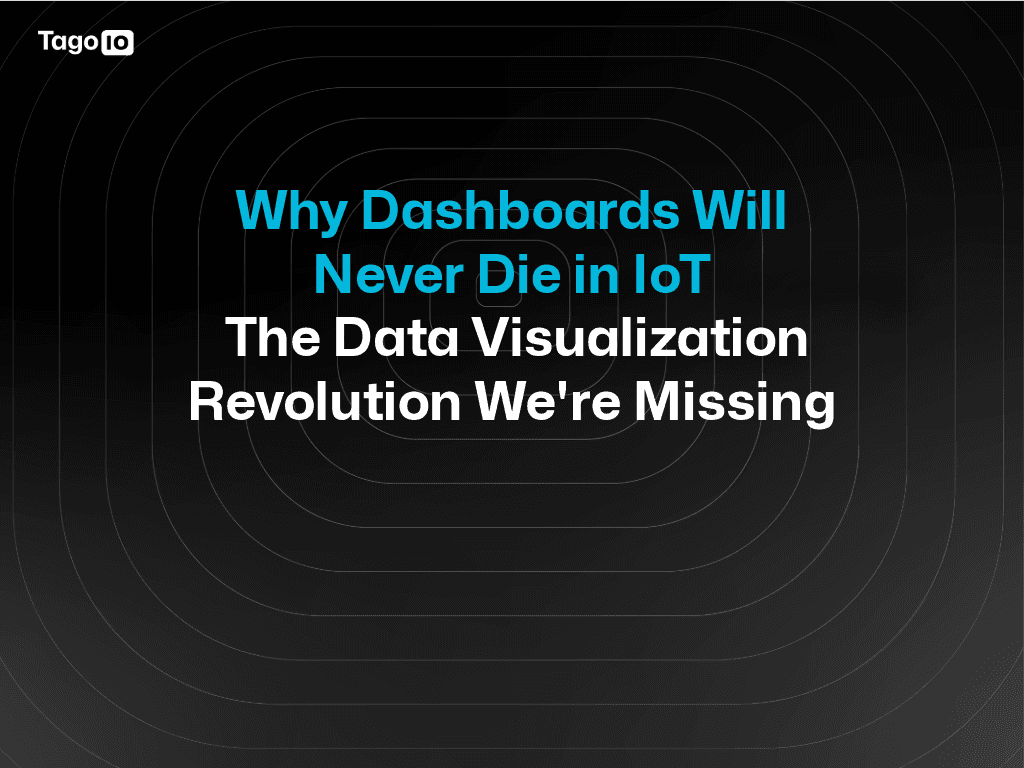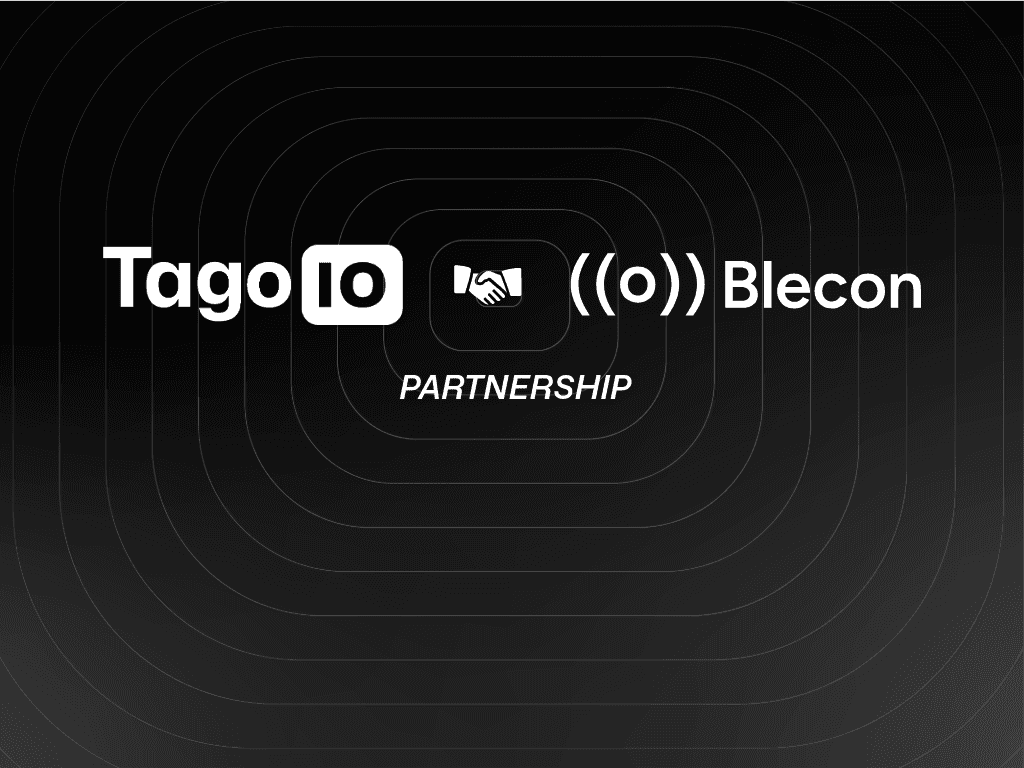Blog
Business
Taking Advantage of IoT in Logistics Applications May Be Easier Than You Think
TagoIO's AI-powered IoT platform simplifies logistics implementation with plug-and-play integration for WMS, TMS, and ERP systems. Transform supply chain operations in weeks, not months.

TagoIO Team
Sep 23, 2025



The revolutionary simplification of IoT implementation in logistics stems directly from advances in artificial intelligence and Model Context Protocol (MCP) server technologies. These AI-powered frameworks have transformed what was once a complex, custom development challenge into streamlined, configurable solutions. TagoIO has embraced these technological advances fully, integrating AI and MCP capabilities to make sophisticated IoT logistics applications accessible to companies regardless of their technical expertise or resources.
The complexity of implementing IoT solutions in logistics has been dramatically overstated. While many companies assume that adding sensor-driven intelligence to their supply chain operations requires extensive technical expertise and major system overhauls, the AI and MCP revolution has changed this reality completely. Modern IoT platforms like TagoIO that leverage these advanced AI capabilities are transforming logistics applications from complex technical projects into straightforward operational enhancements.
The Integration Reality: Plug-and-Play IoT
Seamless Third-Party Software Integration
One of the biggest misconceptions about IoT implementation is that it requires replacing existing logistics software. TagoIO's platform is specifically designed to integrate with the software ecosystem that logistics companies already use, rather than forcing costly replacements.

Warehouse Management Systems (WMS) Integration: TagoIO connects directly with major WMS platforms including SAP Extended Warehouse Management, Manhattan Associates, Oracle WMS, and Blue Yonder. Real-time sensor data from temperature monitors, motion detectors, and BLE beacons flows automatically into existing inventory management workflows without requiring custom development.
Transportation Management Systems (TMS) Integration: Popular TMS platforms like Oracle Transportation Management, SAP Transportation Management, and JDA Transportation Planning integrate seamlessly with TagoIO's fleet tracking and condition monitoring capabilities. Route optimization algorithms can now incorporate real-time cargo condition data, weather sensors, and vehicle performance metrics directly within familiar TMS interfaces.
Enterprise Resource Planning (ERP) Integration: TagoIO provides native connectors for SAP, Oracle ERP Cloud, Microsoft Dynamics 365, and NetSuite. IoT sensor data automatically updates inventory records, triggers maintenance workflows, and feeds into financial reporting systems without manual data entry or complex ETL processes.
Supply Chain Visibility Platforms: Integration with platforms like FourKites, project44, and Shippeo allows TagoIO's sensor data to enhance existing tracking dashboards with granular condition monitoring, predictive analytics, and automated exception management.
TagoIO's AI-Powered Technical Advantage: Making Complex Simple
AI-Enhanced Pre-Built Logistics Connectors
TagoIO leverages AI and MCP server technologies to eliminate the traditional development burden through intelligent, self-configuring connectors designed specifically for logistics applications. Instead of months of custom integration work, companies can deploy IoT capabilities in weeks through AI-powered interfaces that automatically adapt to existing software environments.
AI-Driven Temperature Chain Monitoring: TagoIO's MCP-enabled sensors don't just collect temperature data—they intelligently analyze patterns, predict potential failures, and automatically adjust monitoring parameters based on cargo type and environmental conditions. The system integrates seamlessly with cold chain management systems, using AI to generate predictive compliance reports and proactive alerts.
Intelligent Fleet Management Integration: TagoIO's AI algorithms work with platforms like Samsara, Verizon Connect, and Geotab, adding machine learning-powered predictive maintenance that goes beyond basic diagnostics. The MCP framework enables the system to learn from fleet-wide patterns, identifying maintenance needs before traditional sensors would detect issues.
Smart Dock Door Management: Integration with dock scheduling systems like C3 Solutions and AscendTMS is enhanced by AI-powered optimization algorithms that learn from historical loading patterns, automatically adjusting schedules and resource allocation based on real-time conditions and predictive modeling.
TagoIO's Complete AI and MCP Integration
TagoIO has fully integrated both AI capabilities and MCP server technologies, creating a comprehensive platform that represents the cutting edge of IoT logistics solutions. This integration with Claude and MCP servers represents a fundamental shift in how logistics professionals interact with IoT data, eliminating the need for specialized analytics teams through natural language interfaces powered by advanced AI.

TagoIO's AI-Powered Implementation Examples:
Through TagoIO's MCP-enhanced interface, a distribution center manager can ask: "Which pallets in zone C have been stationary for more than 72 hours?" The AI system processes BLE beacon tracking data, cross-references with WMS inventory records, applies machine learning pattern recognition, and responds with intelligent recommendations: "8 pallets in zone C-4 exceed 72-hour dwell time. Pallet P-3847 contains automotive parts with next-day shipping commitments and should be prioritized. Based on historical patterns, implementing zone C workflow optimization could reduce average dwell time by 23%."
For predictive maintenance, TagoIO's AI analyzes multiple data streams simultaneously. An operations manager can query: "What's the maintenance status of our forklift fleet?" The MCP framework processes vibration sensor data, usage patterns from the WMS, environmental conditions, and fleet-wide performance analytics to provide sophisticated recommendations: "Forklift FL-12 shows hydraulic system degradation signatures. AI models predict 78% probability of failure within 96 hours. Schedule maintenance within 48 hours to prevent operational disruption during Tuesday's peak receiving schedule. Alternative equipment FL-15 and FL-09 are available for reallocation."
Breaking Down Implementation Barriers
Small and Medium Enterprise Advantages
TagoIO specifically addresses the challenges that prevent SMEs from adopting IoT solutions. Traditional implementations required significant upfront investments in infrastructure, technical expertise, and lengthy integration projects. TagoIO's platform approach changes this equation fundamentally.
Cost-Effective Deployment: Instead of major capital expenditures for custom development, SMEs can implement comprehensive IoT monitoring through TagoIO's subscription model. Cloud-based infrastructure eliminates hardware investments while pre-built connectors reduce implementation costs dramatically.
Rapid Time-to-Value: TagoIO's connector library enables logistics companies to achieve operational benefits within weeks rather than months. A regional cold storage facility can implement temperature monitoring, humidity tracking, and energy optimization without disrupting existing operations or requiring technical staff augmentation.
Scalable Growth: TagoIO's modular approach allows SMEs to start with basic monitoring and expand capabilities as operations grow. A mid-sized trucking company can begin with GPS tracking and gradually add predictive maintenance, route optimization, and customer communication features through the same platform.
Technical Architecture Made Simple
TagoIO abstracts the complexity of IoT architecture through standardized interfaces and pre-configured solutions. Companies no longer need to understand the technical details of sensor networks, edge computing, or data analytics pipelines.
Sensor Network Management: TagoIO handles device provisioning, network connectivity, and data collection automatically. Temperature sensors, motion detectors, BLE trackers, and environmental monitors connect through standard protocols without requiring network engineering expertise.
Data Processing and Storage: Real-time data processing occurs transparently within TagoIO's cloud infrastructure. Edge computing capabilities ensure low-latency responses for critical alerts while comprehensive historical data supports trend analysis and predictive modeling.
Security and Compliance: TagoIO manages cybersecurity frameworks, data encryption, and compliance requirements automatically. Logistics companies can focus on operational improvements rather than technical security implementation.
Advanced Capabilities Through Simple Interfaces
Predictive Analytics for Operations
TagoIO's AI integration enables sophisticated predictive capabilities through intuitive interfaces. Logistics professionals can access enterprise-grade analytics without statistical modeling expertise.

Visualization Integration: TagoIO seamlessly integrates with MappedIN to provide comprehensive indoor and outdoor visualization capabilities. This integration transforms complex sensor data into intuitive visual interfaces that logistics managers can easily interpret. Indoor warehouse maps display real-time BLE beacon locations, temperature zones, and equipment status overlaid on detailed floor plans. Outdoor facility views show vehicle locations, trailer positioning, and environmental conditions across the entire logistics campus. The MappedIN integration enables drill-down capabilities from facility-wide overviews to specific zone details, allowing managers to visualize everything from macro-level logistics flows to individual pallet movements within warehouse aisles.
Demand Forecasting Integration: TagoIO can connect with demand planning systems like SAP Integrated Business Planning and Oracle Demand Management, incorporating real-time inventory movement data, seasonal patterns, and external factors like weather conditions to improve forecast accuracy.
Route Optimization Enhancement: Integration with routing software like Route4Me and OptimoRoute adds real-time cargo condition monitoring, traffic pattern analysis, and predictive delivery time calculation based on historical performance data.
Inventory Optimization: TagoIO's sensors provide granular visibility into inventory movement patterns, enabling integration with inventory optimization platforms like GAINS and ToolsGroup to reduce carrying costs while maintaining service levels.
Real-Time Decision Support
TagoIO transforms reactive logistics management into proactive optimization through real-time data integration and automated decision support.
Exception Management: Automated alerts integrate with existing notification systems, escalating issues based on predefined business rules while providing recommended actions based on historical resolution patterns.
Performance Monitoring: Real-time dashboards display KPIs from multiple data sources—WMS transaction logs, TMS routing data, and IoT sensor feeds—providing comprehensive operational visibility through familiar interfaces.
Compliance Automation: Regulatory reporting for temperature-controlled shipments, hazardous materials tracking, and chain-of-custody documentation generates automatically through TagoIO's integration with compliance management systems.
Implementation Strategy: Starting Simple, Scaling Smart
Phase 1: Basic Monitoring
TagoIO enables logistics companies to begin with fundamental tracking capabilities—temperature monitoring for cold chain, BLE beacon tracking for asset location, and basic condition monitoring for sensitive cargo. These capabilities integrate immediately with existing WMS and TMS systems through pre-built connectors.
Phase 2: Predictive Capabilities
Once basic monitoring proves value, companies can activate TagoIO's predictive analytics features. AI-powered insights begin identifying patterns in equipment performance, inventory movement, and operational efficiency without requiring additional technical implementation.
Phase 3: Advanced Optimization
Full orchestration capabilities enable comprehensive supply chain optimization. TagoIO's platform coordinates data from multiple sources—internal systems, external partners, and real-time sensor networks—to provide automated decision support and exception management.
The TagoIO Advantage: AI-Powered Easy IoT, Powerful Outcomes
TagoIO's comprehensive integration of AI and MCP server technologies embodies the principle that sophisticated technology should simplify rather than complicate business operations. By leveraging the latest advances in artificial intelligence and providing seamless integration with existing logistics software, TagoIO has created a platform that handles all the technical complexity behind intuitive interfaces. This enables companies to focus on operational excellence rather than technical implementation, while accessing the most advanced IoT capabilities available today.
The AI and MCP revolution has made what seemed impossible just a few years ago into today's reality. TagoIO has harnessed these technologies completely, offering the most comprehensive AI-powered IoT platform available for logistics operations. The question isn't whether IoT will transform logistics operations—it's whether your company will lead this transformation by partnering with a platform that has it all: AI intelligence, MCP integration, seamless connectivity, and proven results.
Ready to experience how TagoIO's complete AI and MCP integration makes IoT logistics easier than you thought possible? Contact our team to discover how our comprehensive platform can transform your operations with the latest in AI-powered IoT technology.

TagoIO Team


